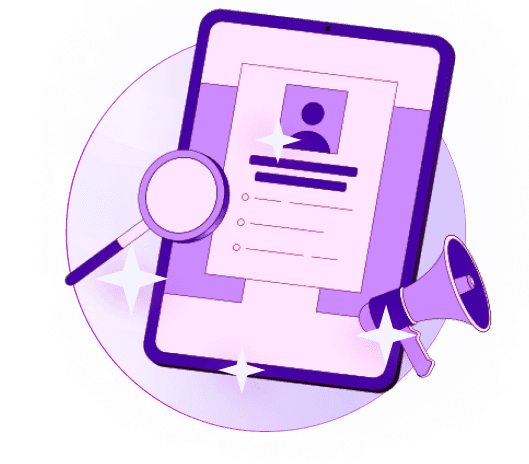Blogs
Articles

AI Personalization: What Actually Works in 2025 [Real Results]
Businesses can't ignore AI personalization anymore. Customer data shows 76% of people get frustrated when companies don't provide personalized interactions. This gap between what customers want and what businesses deliver creates a challenge that also presents a fresh chance for growth.
Our team studied the most effective AI-powered personalization strategies for 2025. We looked at how successful companies put these technologies to work. This piece explores real-life ways companies use artificial intelligence personalization in different industries. You'll learn about tools and strategies that bring measurable results beyond theoretical ideas.
What is AI personalization?
AI personalization uses artificial intelligence to create tailored experiences for individual users by analyzing their data and behavior patterns. Generic marketing falls short here - AI personalization delivers specific products, services, and messaging that match each recipient's needs.
This technology works by looking at several data points:
Browsing and purchase history
Social media interactions
Demographic information
Customer service interactions
User behavior details (like time spent viewing products)
Advanced algorithms help AI process historical and live data to uncover patterns and priorities that simpler systems might miss. To cite an instance, an ecommerce site's AI can track which products catch your eye, how long you view specific items, and which details you zoom into — insights that are especially valuable for businesses optimizing their ecommerce call center operations to match customer expectations in real time.
AI personalization differs from traditional approaches in significant ways. Traditional personalization depends on simple rule-based systems and basic segmentation. AI uses sophisticated machine learning algorithms that process complex data sets. Traditional systems update on schedule, but AI learns and adjusts continuously.
What Is Hyper-Personalization?
Hyper-personalization marks the next stage in AI personalization and takes customization to new heights. This advanced approach combines immediate data, artificial intelligence, machine learning, and predictive analytics to create uniquely tailored experiences for each customer.
Beyond Basic Personalization
Traditional personalization might only use names or past purchases. Hyper-personalization takes a closer look at customer behavior and priorities. The system analyzes specific data points like browsing behaviors, location information, device usage, contextual factors (like weather or time of day), and social media interactions. This depth of analysis helps businesses create experiences that feel unique to each customer.
The Technology Behind Hyper-Personalization
Hyper-personalization depends on sophisticated technologies:
Artificial intelligence and machine learning to process huge amounts of data
Immediate analytics for dynamic content customization
Predictive capabilities that anticipate future customer priorities
Contextual understanding that creates relevant content for each user
Data Types That Power Hyper-Personalization
The success of hyper-personalization comes from combining multiple data streams:
Behavioral data that shows how users interact with websites or apps
Transactional data including purchase history and payment priorities
Contextual data about time, location, and device type
Social data that reveals likes, shares, and interests on different platforms
Business Impact and Benefits
Implementing hyper-personalization brings substantial advantages. McKinsey's research shows that personalization can reduce customer acquisition costs by up to 50%, increase revenues by 5-15%, and boost marketing ROI by 10-30%. Customers who feel understood through tailored interactions develop stronger emotional connections with brands. This leads to increased loyalty and involvement.
What are the benefits of AI personalization?
The impact of ai personalization goes nowhere near simple customization and delivers measurable business results in multiple ways. Businesses can now understand their customers better than ever through smart data analysis.
Improved customer experience emerges as a primary benefit, with 71% of customers showing that personalized communication shapes their brand choices. Customers build stronger emotional connections and feel truly understood and valued when interactions feel custom-made. So, this leads to long-term loyalty and continued participation.
Looking at business performance, ai-powered personalization creates impressive results:
Organizations that put customer experience first achieve three times the revenue growth of their peers
Personalization campaigns can cut customer acquisition costs by up to 50%
Well-executed personalized campaigns get 8X returns on marketing spend and boost sales by 10%
Companies using advanced personalization see conversion rate increases of 10-30%
These benefits show up through several channels. Personalization ai analyzes big data sets to spot patterns in customer behavior, which helps businesses predict needs before customers express them. In fact, this predictive power enables proactive customer engagement instead of reactive responses.
How AI personalization works?
The sophisticated AI personalization process works through specific operational steps to create individual-specific experiences and recommendations. The system gathers extensive customer data about browsing habits, purchase history, demographics, and context like location and time. Companies combine their data with third-party information to build complete user profiles.
AI algorithms then spot patterns and trends in how people use their services. Users get grouped based on shared traits - a technique called audience segmentation. The artificial intelligence personalization system processes past and up-to-the-minute data analysis points at once.
The most common AI personalization techniques include:
Content-based filtering: Recommends items with similar attributes to those a user has previously enjoyed
Collaborative filtering: Predicts interests by analyzing priorities of similar users
Predictive analytics: Anticipates user behavior based on pattern recognition
Natural language processing: Makes AI understand human language to create more individual-specific interactions
AI personalization tools
The AI personalization tool market has grown faster and now provides many solutions for businesses that want to create customized customer experiences. The current market includes several tool categories that address different personalization needs.
ChatGPT
TensorFlow
Emerging trends in AI personalization
AI personalization advances faster in 2025 and pushes beyond traditional boundaries into new territories. Business leaders have embraced AI-driven personalization, with 92% using it to propel development and revenue. Three out of four executives call it vital to their success.
The digital world sees a major change from generative AI to agentic AI. Agentic AI stands apart from conventional systems that just respond to queries. These systems work independently and learn continuously from customer behavior without manual intervention. They actively seek the best outcomes for businesses and customers alike.
New technologies have altered the map of ai personalization:
IoT and AR integration - Smart home systems and wearable devices provide up-to-the-minute data analysis for AI. This enables highly contextual personalization. AR creates immersive experiences like virtual product try-ons that boost customer participation.
Emotional AI and digital avatars - Advanced systems analyze voice, text, and facial expressions to detect customer emotions. This creates more empathetic interactions. These technologies power lifelike avatars that deliver tailored experiences across platforms.
Enhanced privacy solutions - Federated learning processes data locally on devices instead of central servers. This preserves privacy while personalizing effectively. Blockchain technology offers decentralized storage solutions that build consumer trust.
Best practices for AI personalization
Companies need methodical planning and ethical considerations to implement ai personalization successfully. A solid data foundation requires substantial investment in data capture, cleaning, and computing infrastructure. This foundation helps create resilient personalization that produces measurable results.
Businesses should make transparency their top priority in all personalization efforts. Trust builds when companies clearly inform users about their data usage. This has become vital as consumers now value both privacy and personalization equally. Higher engagement and retention rates come from organizations that maintain this delicate balance.
Your ai-powered personalization strategy should follow these ethical practices:
Implement strong data security measures and encryption to prevent breaches
Adhere to industry standards and global/national regulations
Regularly audit technology for bias and fairness
Equip users with clear opt-out options
View all customer data as information requiring protection
Conclusion
AI personalization has evolved from a marketing buzzword into a crucial business strategy in 2025. This piece shows how individual-specific experiences create measurable results in industries of all types. Companies that implement AI personalization well achieve 10-30% higher conversion rates and get up to 800% ROI on their marketing investments.
The trip to working personalization starts with understanding customer data and picking the right tools for specific needs. Businesses must balance hyper-personalization power with ethical considerations and privacy concerns. While 71% of customers expect individual-specific experiences, they just need transparency about their data usage.
AI personalization's future looks bright with emerging technologies like agentic AI, emotional recognition, and augmented reality integration. These advances will help companies create sophisticated and contextual experiences. Businesses ready to implement state-of-the-art AI personalization strategies in their marketing can find specialized solutions at Persana.ai that improve measurable results.
FAQ
How AI Can Improve Customer Experience?
AI boosts customer interactions by sorting through big amounts of customer data. This creates customized experiences that address needs at all touchpoints. AI customer experience stands apart from traditional approaches because of its data analysis capabilities.
AI-powered chatbots have become popular as technology gets better. They provide quick answers and solve simple problems around the clock. These conversational AI systems serve as contact centers for customers who need help right away.
How can AI be used to personalize learning?
AI revolutionizes education by adapting learning experiences to each student's needs, interests, and learning styles. Students engage more and learn better with this personalized approach.
Adaptive learning shows AI's greatest potential in education. Students who use AI-driven programs see their test scores jump by 62%. These platforms look at how students learn and adjust content and exercises to fit their strengths and weaknesses.
AI-powered educational tools spot students who struggle academically by looking at their performance data. The tools can also predict future academic problems by analyzing past performance, engagement levels, and other factors.
What are 2 AI Personalization Challenges?
Data privacy concerns create the most important challenges. AI needs lots of data to work well, which could lead to misuse or privacy violations. A survey shows that only 51% of customers trust organizations to protect their personal data and use it properly.
Finding the right mix of AI and human interaction presents another challenge. AI makes things faster, but it lacks the human touch and empathy customers want. Too much AI might make customers feel distant since many still want some human interaction in their service experiences.

Create Your Free Persana Account Today
Join 5000+ GTM leaders who are using Persana for their outbound needs.
How Persana increases your sales results
One of the most effective ways to ensure sales cycle consistency is by using AI-driven automation. A solution like Persana, and its AI SDR - Nia, helps you streamline significant parts of your sales process, including prospecting, outreach personalization, and follow-up.



